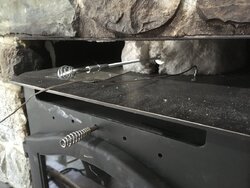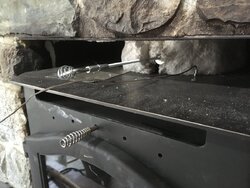The ash I got from my father in law reads 20.5% moisture on the biggest split. Properly read, woods been inside for a few days, split face read wither grain. I do look forward to next year when the standings dead I burn has another year to dry, but you can’t look a gift horse in the mouth, and it still probably better than what you could buy.
The parts came yesterday, the offset the front unscrews, so it looks like a top down sweeping, and shop vac whatever falls in the offset, which is fine, the rods I bought were not super bendy, so I was going to do a top down cleaning anyways. I think I can get the damper in the offset, and by putting a slight angle on the damper and a longer control rod I should be able to adjust it without much effort or burning of the flesh. I’ll post pics once I get it made up.
The parts came yesterday, the offset the front unscrews, so it looks like a top down sweeping, and shop vac whatever falls in the offset, which is fine, the rods I bought were not super bendy, so I was going to do a top down cleaning anyways. I think I can get the damper in the offset, and by putting a slight angle on the damper and a longer control rod I should be able to adjust it without much effort or burning of the flesh. I’ll post pics once I get it made up.




